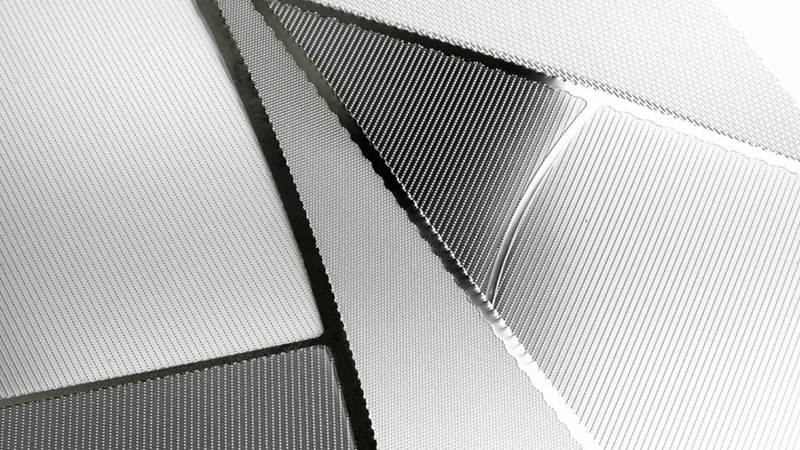5 reasons why Electroforming is the choice for next-gen filtration fabrication
Filtration is a vital process utilized across a tremendous range of applications. As filtration needs become more advanced and specialized, Electroforming provides unique opportunities for engineers to develop filtration media and components to meet the highest standards.
This article was first published on
insights.vecoprecision.comFiltration screens are essential components that are widely used across industries to separate solid particles from liquids or gases. Common applications include water purification, beverage clarification, pharmaceutical manufacturing, automotive fuel and oil filtration, air purification, etc. They serve critical purposes such as removing contaminants, classifying particles by size, protecting sensitive equipment, clarifying liquids, and more. The performance of filtration screens depends heavily on characteristics like pore size, distribution, shape, orientation, chemical resistance, and mechanical strength. Electroforming has proven to be an unparalleled manufacturing method capable of meeting the strictest demands for high-precision filtration applications.
Electroforming, also known as Photo Electroforming or Lithographic Electroforming, is a versatile manufacturing process that utilizes lithography and electrodeposition processes to produce high-precision metal parts and components. The process is particularly suitable for creating complex shapes and very fine structures, which makes it ideal for manufacturing filtration applications with high precision requirements.

While many fabrication techniques can be used to produce porous filtration components, Electroforming technology stands out for its high precision, superior strength, design flexibility, and advanced feature engineering.
(1) high resolution
The Electroforming process allows exceptionally fine control down to 1 micron, beyond what other manufacturing methods can achieve, making it especially ideal for microfiltration applications. In comparison, Laser drilling is limited to hole diameters of around 10-20 microns due to factors like beam focus limitations, thermal diffusion, and melt ejection. Micromachining techniques can reach 5 microns but have reduced material integrity at small scales, not to mention conventional machining is limited to 50 microns and above.
(2) superior strength
In addition to resolution, Electroforming also enables very high strength. For example, Veco’s specially developed nickel can achieve tensile strength of 2200-2300 MPa and yield strength from 1900 to 2100 MPa. The superior strength and excellent strength-to-weight ratio make it suitable for filtration applications that need to withstand high pressures and flow rates without distortion or failure. In comparison, Laser drilling induces thermal stresses and alloying effects that reduce strength. Micromachined components have reduced strength from cutting tool pressures and deflection under high forces. Welded parts also have strength reductions from grain growth and solidification defects in the weld zones. (learn more about the material properties of Electroformed components)
(3) outstanding chemical resistance
Filtration applications frequently involve aggressive or reactive solvents, acids, and other chemically challenging substances at high temperatures. Electroformed filtration sieves, especially with extra coating, can provide exceptional chemical resistance under these harsh conditions. This might prevent corrosion, loss of integrity, and contamination for critical applications. On the contrary, Laser processed metals can lose corrosion resistance due to alloying, oxidization, and weld defects. Machined and welded components have exposed surface defects that reduce chemical reliability.
(4) unparalleled design flexibility
Electroforming's flexibility is invaluable for custom engineering filtration performance. Unlike subtractive processes which lack much adjustability, Electroforming is an Additive Manufacturing process that allows fine-tuning of the filtering component formation. This means pore sizes, shapes, densities, and other parameters can be optimized for the customer’s demands. No other standard manufacturing process offers the same design flexibility and customization possibility over micro filter features from prototyping to mass production.
(5) advanced feature engineering
Electroforming also enables the co-developing of advanced features of filtration screens to meet customers’ demands, such as pore size, pore shape, cross-section profile, etc., permitting advanced precision filtering screen engineering (check out our co-development approach here).For example, enabling tight control of pore density and open area percentage, angled pores for a low-pressure drop, uniform thickness for consistent flow across the screen, precisely shaped pores (circular, slotted, hexagonal, etc), defined pore orientation, and complex channel networks behind the pores. Laser processes, machining processes, and chemical etching lack this level of variability and control.
In conclusion, Electroforming's unique combination of high resolution, excellent strength, chemical resistance, unparalleled design flexibility, and advanced engineering capabilities make it the manufacturing technology of choice for fabricating advanced filtration components where precision, performance, and reliability are paramount. As filtration demands continue to become more challenging across diverse industries, Electroforming provides a solution for engineers to develop next-gen filtration solutions to meet the most demanding pore size, chemical, mechanical, and volume requirements to push filtration capabilities into new territories across industries.

